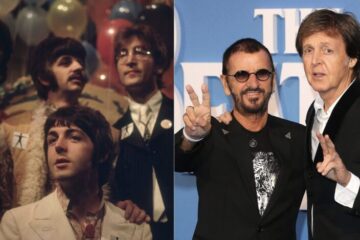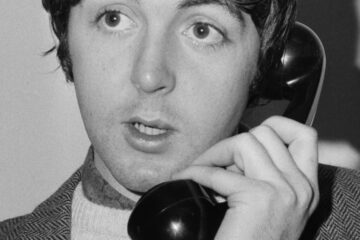Paul McCartney and Elvis Costello’s dozen songwriting collaborations were sprinkled throughout several of the men’s albums over half a decade or so. The last of those songs appeared on McCartney’s 1993 album Off the Ground, including the piercing character sketch “Mistress and Maid.”
What is the song about? How did it differ from other songs on Off the Ground? And what did a painting have to do with its creation? Let’s find all about “Mistress and Maid,” an underrated gem from ‘90s-era Paul McCartney.
Ground Control
Paul McCartney kept up a busy pace in the late ‘80s and early ‘90s. His 1989 LP Flowers in the Dirt, boosted by some songs written with Elvis Costello, earned him his best notices since the early part of the ‘80s. He also found a touring band with which he shared great chemistry, and he didn’t want to waste that.
As a result, McCartney headed back into the studio for his next original album using many of the same musicians with which he toured. He hadn’t really done a whole album with a steady band since the days of Wings. Off the Ground was an album that was primarily the result of that touring band and McCartney banging away together in the studio.
But “Mistress and Maid” offered a pretty stark exception to that approach. The waltzing number, which had been written years earlier by McCartney and Costello, was adorned with a circus-like atmosphere. All manner of brass instruments are pumping away along with a coterie of violins, colorful musical backing for what’s actually a somber song.
“Maid” to Order
Backtrack to 1987, which is when Paul McCartney first met with Elvis Costello to write songs together. McCartney was reeling a bit following the cold critical reaction to his 1986 album Press to Play. Costello had started to divest himself from recording with his longtime band, The Attractions. The timing was right for these two songwriting titans to unite.
As it turned out, “Mistress and Maid” was the very first song that they wrote together. In an interview with Performing Songwriter, Costello explained how McCartney got them rolling:
“He just came in with a postcard of the Vermeer painting. It’s called ‘Mistress and Maid,’ and it’s of a noblewoman and her maid giving her a letter. And Paul said, ‘What’s that mean?’ And we thought it was probably supposed to mean that the maid is bringing a letter from her lover or taking a letter to her lover. That’s usually the story in those pictures. We didn’t end up writing that story, but we wrote another story and got back into that character song thing.”
What is the Meaning of “Mistress and Maid”?
“Mistress and Maid” uses shifting perspectives and ornate language to tell the tale of a wife who has been unofficially but essentially demoted by her uncaring husband. The song begins with what seems like a sweet domestic scene, as the wife dotes on her husband. But the reciprocation isn’t there: But where are the flowers that he used to bring? / Every endearing remark.
In the second verse, it appears that what started with the husband simply admiring girls in a magazine is going to transform into adultery: The look in his eyes tell her it won’t be long / Till the girls on the page come to life. She wants to make her showstopping speech to him, but we don’t know if she’ll have the courage: She wants to shout at the back of his head / Look at me, look at me, look at me / I’m afraid.
In the final chorus, McCartney and Costello give her a moment of defiance: See what it’s come to / I’m not your mistress and maid. “Mistress and Maid” must have given both men confidence their partnership was headed in the right direction. And it ended up giving Paul McCartney, in particular, a fascinating curveball on an unheralded album.



